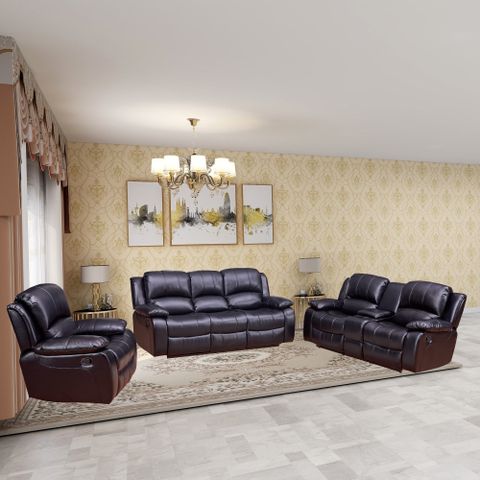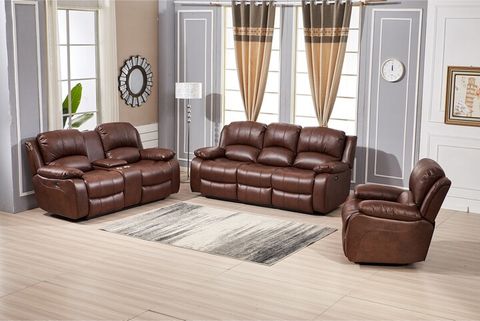Think about the last time you sat down in your living room and felt truly relaxed. What made that moment special? Was it the way the furniture flowed together, or perhaps the unexpected texture that caught your eye? Today’s living rooms are no longer just places to watch TV or entertain guests. They’ve become personal sanctuaries that reflect our lifestyles, values, and aesthetic preferences. The furniture we choose tells a story about who we are and how we want to live.
The landscape of living room furniture has undergone a dramatic transformation over the past decade. What once was considered traditional seating arrangements has evolved into something far more dynamic and personalized. We’re seeing a shift away from rigid, formal layouts toward more fluid, adaptable spaces that serve multiple purposes. This evolution isn’t just about style – it’s about functionality, comfort, and creating environments that truly support modern living. From the materials used to the shapes chosen, every element of contemporary living room furniture reflects our changing relationship with space and comfort.
Minimalist Aesthetics: Less is More
Minimalism has taken hold of living room design like never before. This trend emphasizes clean lines, uncluttered spaces, and purposeful simplicity. Think of furniture that serves multiple functions without sacrificing elegance. The beauty lies in the restraint – each piece has a reason for being there. Consider a sleek sofa with hidden storage compartments or a coffee table that doubles as a dining surface. These designs don’t just look good; they actually improve daily life.
What makes minimalist furniture particularly appealing is its timeless quality. It doesn’t follow fleeting fads but instead focuses on enduring design principles. The key is choosing pieces that feel substantial yet airy. This approach creates breathing room in your space while maintaining visual interest through thoughtful details like geometric patterns or carefully selected textures.
Many designers now advocate for the ‘less is more’ philosophy because it reduces decision fatigue. When you have fewer options, you make better choices. Minimalist furniture encourages this mindset, leading to more intentional decorating decisions.
Natural Materials and Earth Tones
There’s something deeply comforting about bringing nature indoors. Contemporary living room furniture increasingly features natural materials like wood, stone, and woven textiles. These elements create warmth and authenticity that synthetic alternatives simply cannot match. The trend isn’t just about using these materials – it’s about celebrating their inherent beauty and imperfections.
Earth tones dominate the color palette, with rich browns, muted greens, and soft terracotta becoming the go-to choices. These colors work beautifully together, creating a sense of harmony and balance. Imagine a living room where a reclaimed wood console sits next to a wool throw in sage green – the combination feels both grounded and sophisticated.
The appeal of natural materials goes beyond aesthetics. They offer better durability, are more sustainable, and provide tactile experiences that enhance our connection to our environment. Many homeowners find that furniture made from natural materials ages gracefully, developing character over time rather than looking dated.
Multifunctional and Flexible Design
Modern lifestyles demand versatility, and living room furniture is answering that call with innovative multifunctional solutions. The days of rigid furniture that serves only one purpose are fading fast. Today’s designers focus on creating pieces that adapt to changing needs throughout the day or season.
Consider a sectional sofa that transforms into a guest bed, or a storage ottoman that provides seating and hidden storage space. These designs maximize utility while maintaining visual appeal. Some pieces even incorporate technology seamlessly, like built-in charging stations or integrated lighting systems. The goal is to eliminate clutter and create spaces that feel organized despite their functionality.
Flexibility extends beyond physical features to spatial arrangements. Modular furniture allows homeowners to reconfigure their living spaces easily. This adaptability is especially valuable for smaller homes or apartments where every square foot counts. It also means that as your lifestyle changes – whether due to family growth or career shifts – your furniture can evolve with you.
Bold Colors and Unexpected Patterns
While minimalism continues to gain traction, there’s also a growing appreciation for bold statements in living room design. Colorful furniture pieces and unexpected pattern combinations are making their way into more homes than ever before. This trend isn’t about overwhelming spaces – rather, it’s about creating focal points that energize and inspire.
A deep emerald green armchair or a vibrant coral accent chair can transform an entire room’s mood. Patterned fabrics, from geometric prints to botanical motifs, add visual interest without feeling chaotic. The secret is balancing these bold elements with neutral backgrounds that allow them to shine.
This approach recognizes that people want their homes to reflect their personalities. Rather than sticking to safe, predictable choices, homeowners are embracing colors and patterns that make them feel confident and expressive. The result is more personal, engaging spaces that spark conversation and joy.
Technology Integration and Smart Features
The digital age has fundamentally changed how we interact with our furniture. Contemporary living room pieces are increasingly incorporating smart technology designed to enhance convenience and comfort. These innovations range from subtle improvements to revolutionary changes in how we use our spaces.
Smart furniture includes features like built-in wireless charging pads, LED lighting systems that adjust to different moods or times of day, and even furniture that can connect to home automation systems. Some pieces now feature integrated speakers, climate control elements, or even air purification capabilities. These additions don’t distract from the aesthetic – they enhance it.
The integration of technology requires careful consideration. The best smart furniture balances innovation with simplicity, ensuring that the tech enhances rather than complicates daily life. Users shouldn’t feel overwhelmed by controls or worried about maintenance. Instead, they should feel more connected to their environment and more comfortable in their own space.
Sustainable and Ethical Manufacturing
Environmental consciousness has moved from a niche concern to a mainstream priority in furniture design. Today’s consumers are increasingly interested in where their furniture comes from and how it was made. This awareness has led to significant changes in manufacturing practices and material selection.
Sustainable furniture often uses recycled materials, responsibly sourced woods, or innovative eco-friendly alternatives. Brands are transparent about their supply chains and manufacturing processes, allowing customers to make informed choices. The movement toward sustainability doesn’t mean compromising on quality or style – quite the opposite.
Ethical considerations extend beyond environmental impact to include fair labor practices and community support. Many manufacturers now prioritize worker welfare and local production, contributing to economic stability in their regions. This approach creates a stronger connection between the consumer and the product, fostering a deeper appreciation for the items in their homes.
The trend toward sustainable furniture represents a broader shift in values. People want to feel good about their purchases, knowing they’re contributing to positive change while enjoying beautiful, functional spaces.
Contemporary living room furniture trends reflect our evolving understanding of what makes a home truly livable. Whether you’re drawn to minimalist designs, natural materials, or smart technology, there’s a wealth of options available that combine beauty with functionality. The most successful approaches integrate multiple trends thoughtfully, creating spaces that feel both current and timeless. As we continue to navigate changing lifestyles and priorities, furniture will undoubtedly continue to evolve. The key is finding pieces that support your way of life while expressing your personal style. The future of living room design looks bright, with endless possibilities for creating spaces that truly serve us all.











